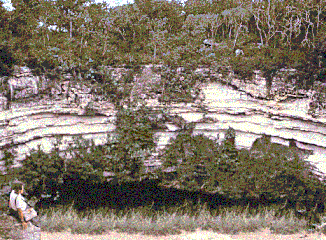Athena Review Image Archive ™
Chichén Itzá: The Cenote of Sacrifice

Cenote of Sacrifice at Chichen Itza (photo: Athena Review).
The
Cenote of Sacrifice, largest of two natural sinkholes at Chichén Itzá,
was used as a sacred site in the Late Classic (AD 600-950) and
Postclassic (AD 1000-1550) periods, and on into post-contact times.
Landa (1566), in his Relacion de las Cosas de Yucatan, describes sacrifices at the cenote still occurring in the mid 16th century, with people cast to the Chacs or rain gods:
“Into
this well they have had and still have the custom of throwing men alive
as a sacrifice to their gods in time of drought, and they believed they
would not die, although they never saw them again. They also threw into
it many other things like precious stones and things they prized...."
In
1904-7 the Cenote of Sacrifice was dredged by Edward H. Thompson,
the American consul at Mérida, with funding from the Peabody Museum at
Harvard. The Sacred Cenote at Chichén Itzá has since been explored
since the 1960s by several groups of Mexican and American divers and
archaeologists. Among many thousands of items found include pottery
incensarios, bowls with offerings of copal incense studded with jade
beads; flint and obsidian arrowheads and blades; copper chisels and
incised copper disks; cloth; carved wood and jade; and bells, disks,
and masks of gold, mostly imported from Panama and Costa Rica. Also
recovered were skeletons of young girls and old men, perhaps confirming
the 16th century accounts of sacrificial victims.
Copyright © 1996-2019 Rust Family Foundation (All Rights Reserved).